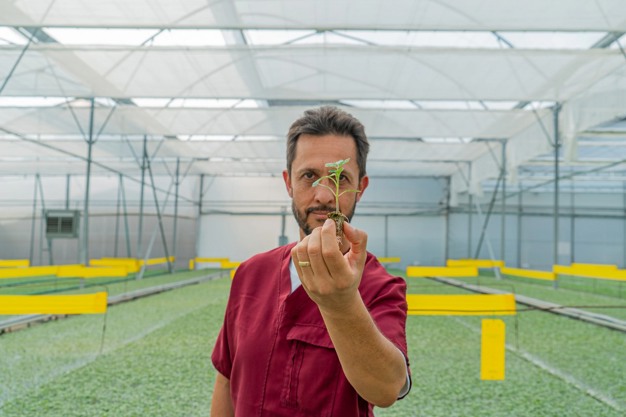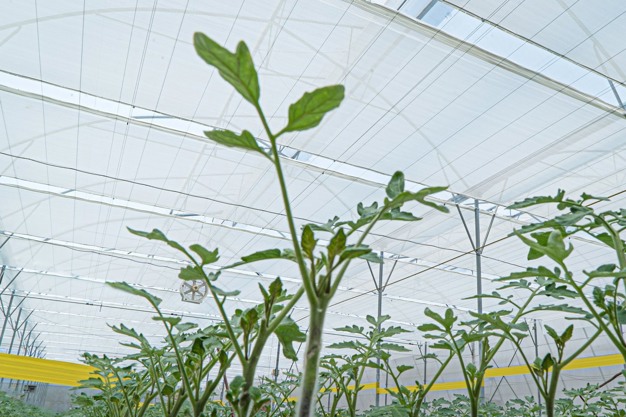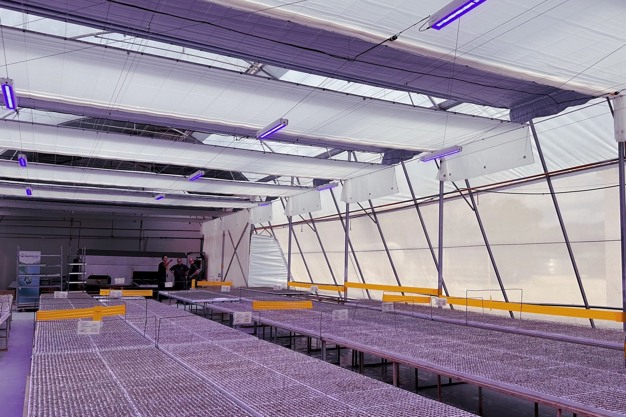The extreme weather event that happened in Mexico in May was a head-in-the-hands event for many growers. In some cases, it was a disaster.
"So when I recently got the chance to speak to Pharis, we started talking about the hot weather, and what the changing climate means for growers who are at the sharp end of it", shares Alejandro Medina with Svensson, who talked about the weather with Pharis Rico from Plantanova, Mexico. "May was hot, some say extreme. What was your experience in Tuxpan?'", she asked him.
Pharis Rico: "Well, we are fortunate that the valley has a temperate climate. There is always a cooling breeze and there's water, but May was absolutely unprecedented. Our temperature peaks would typically be 30 or 31°C, but in May we saw something extreme. We have never seen three heat waves in a row with up to 40-degree temperatures in May. The whole world is becoming hotter. I travel a lot and I'm seeing it all over."

AM: "You know a lot of growers. Were people calling each other asking for advice on how to cope?"
PR: "Yes, of course. I know this one guy who called me to say he is not going to be selling tomatoes anymore. He said he was starting a ketchup business. That's because, with that heat, the tomatoes were ripening fully on the vine. The same issue created a lot of problems with people's schedules for delivery, and since their harvest ended prematurely they came to us for new plants much earlier and we couldn't always react because we hadn't reserved the space."
Surviving three heat waves in a row
AM: "What could you at Plantanova do to cope with the hot temperatures we saw then?"
PR: "Well, we were lucky with the timing of it, because we had just installed a PARperfect double-screen system from Svensson and this, in combination with vertical fans and fogging, makes a big difference. Seriously, without using technology, we would face temperatures of 47°C in our greenhouses in weather like we saw in May. And, high temperatures mean more insects, both the good and the bad. But we've learned in our business we can't afford to have thrips getting into the crops. So for that, we use Svensson's smallest gauge Xsect nets. If we were not using screens to manage the amount of light and heat then we would not be able to protect the crop in this way, and we wouldn't be successful."

Crops at Plantanova this spring
AM: "Do you think people may have to stop growing when it's hottest then?"
PR: "Well, that's actually how things used to be. There was seasonality. You would not expect berries when it wasn't berries season. Or apples. You would expect tomatoes at the time of the tomato harvest. But that's not what the customer expects any longer. They want plants all year round. For us, this means we are expected to be providing young plants to our customers at any time of year for the new growing cycle to begin."
AM: "Was there anything unusual you had to do to get you through the three heat waves in May?"
PR: "Well, one thing is that generally speaking when things get a little rough we talk to other local growers about how they are coping. You know, you exchange tips and ideas. But in May I was calling people all over the world to get advice. We were on the phone a lot with the team at Svensson, people in France, and other hot regions. The thing is: these conditions are new to our region, so there is no point in asking for advice from people in a region that has never seen this heat."

Pharis's team are now testing integrating LED blue light alongside their screen set-up
Adapting to the extreme heat
AM: "What would be your advice for someone who has a simpler operation, say, a polytunnel setup here in Mexico or another traditional greenhouse in a warm region? Perhaps they are also considering whether to adapt what they do?"
PR: "My suggestion is to think five to ten years ahead and consider water scarcity, climate adversity, and your people. If you're willing to get these things right, your business has a chance to thrive in the years to come. But we mustn't wait to adapt until it's too late."
AM: "Heat like we've seen must be hard on staff. Have you ever had to help someone who is heat-exhausted?"
PR: "Yes, plenty of times, of course. It doesn't matter if you are an ultra runner or a super athlete. 40 degrees is 40 degrees. We used to give our people a medical check-up when they started with us, but these days we are also having to consider medically whether they will be able to cope with these high temperatures."
Three steps to future-proof your operation
AM: "What about those who say that sustainability and the environment are nice to have, but they can't afford to invest in that?"
PR: "Well, talk to people who have solved these problems. Get good advice. And if they advise you to invest and you think it's too expensive, well, maybe you're not in the right business. Take our situation. Right now it is raining a lot in Mexico. We have good water in our well. But we are investing in technology to recirculate our water, to use the rainwater as efficiently as we can. This is because we are not thinking about this season, but the next thirty or forty years. And then there is also the consumer. When I started in this business, a tomato was a tomato. Now the consumer wants an all-season product, and their expectations about flavor are growing fast, and then there is the sustainability aspect and also the treatment of people."
AM: "You told me once you draw inspiration from coffee and wine, what do you mean?"
PR: "I think if there was one thing we haven't talked about that is important, it's that we learn to look outwards more. To use a word from our work at Plantanova: cross-pollination. We need to learn more from other industries. You know the way a Barista, a coffee connoisseur, cares about whether the cup is heated before the coffee is poured, or they say that a double expresso is not a double express if it's 65 or 70 milliliters instead of two times 30ml. I'm inspired by coffee-making. By that level of detail. Or by a winemaker who is so proud of the quality and flavor of a season's production that he renames the bottle "à mon Père". Imagine, caring so much that you want to dedicate it to your father. People ask me why we invest so much in technology at Plantanova, it's because we want to provide a level of quality that doesn't currently exist in the country."

For more information:
Ludvig Svensson
info@ludvigsvensson.com
www.ludvigsvensson.com
Plantanova
www.plantanova.com.mx
